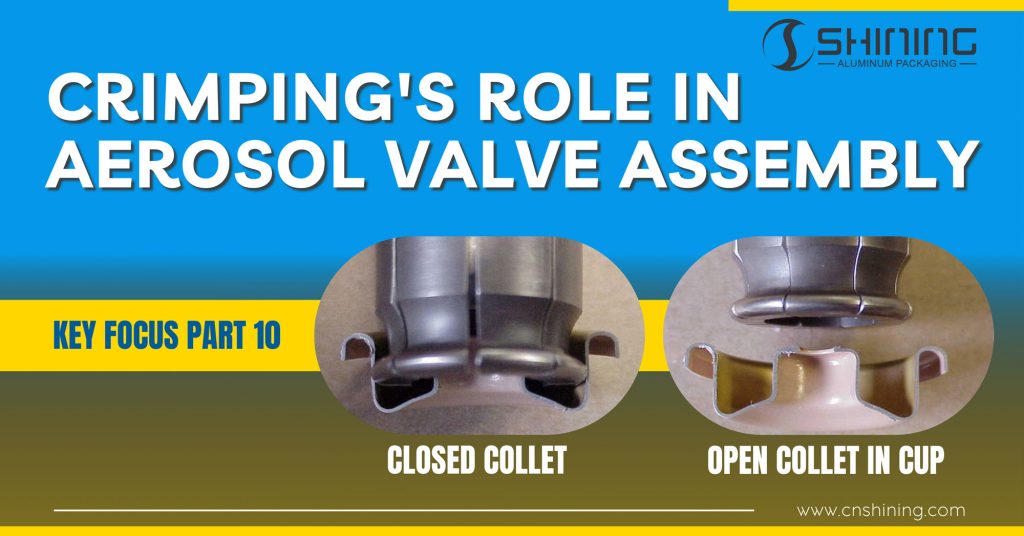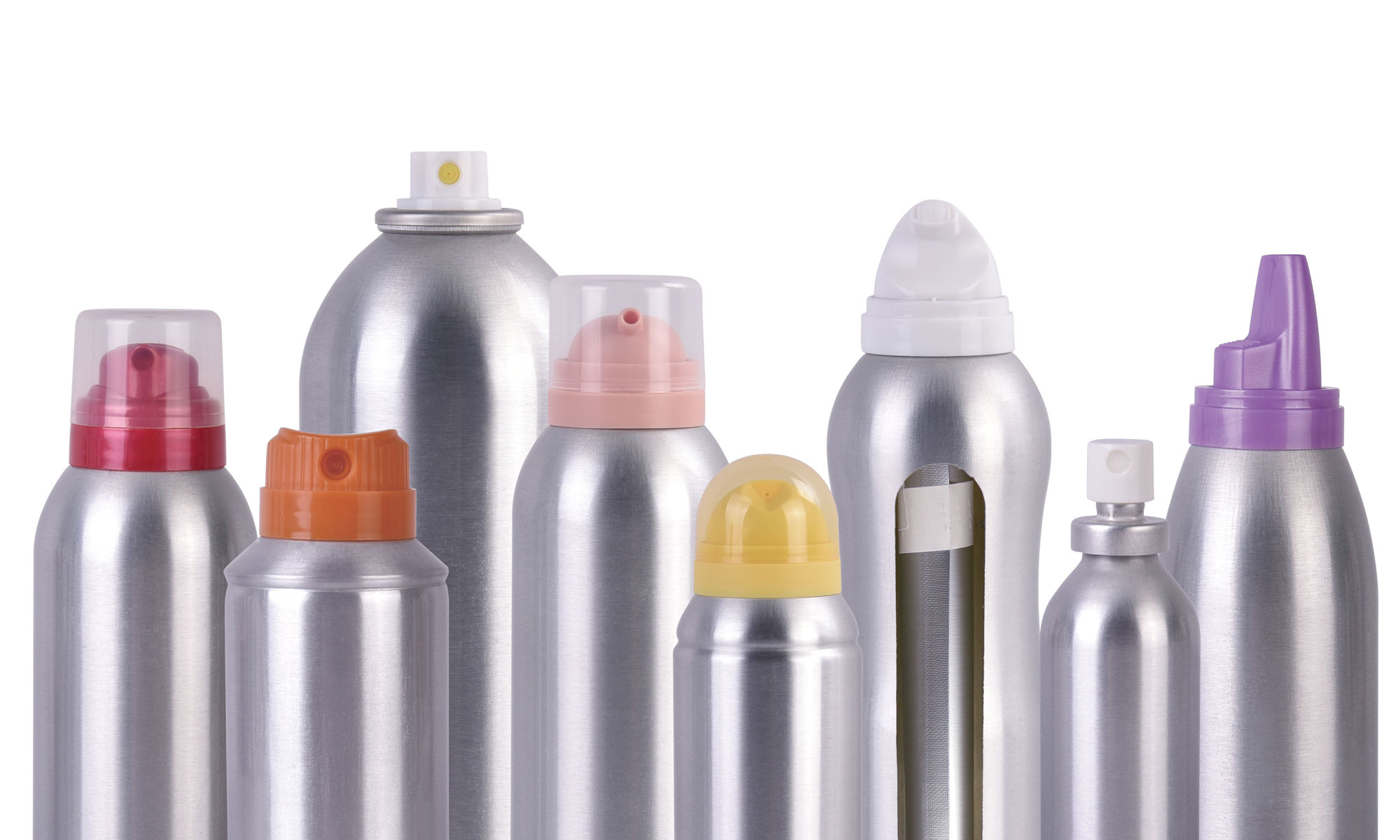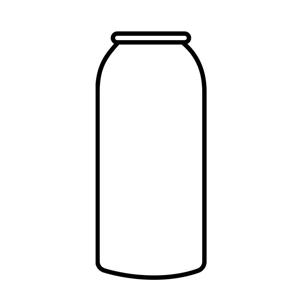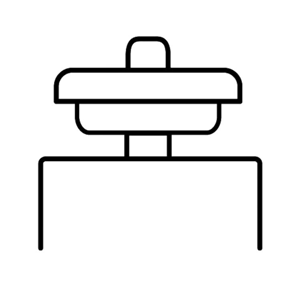Introdução
No mundo de válvulas de aerossol, garantir uma fixação segura e confiável da válvula é essencial para o desempenho e a segurança ideais. É aqui que a crimpagem – o processo de fixação da válvula à lata de aerossol – entra em cena. Como especialistas na fabricação de válvulas de aerossol, frequentemente enfatizamos a importância dessa técnica porque ela não apenas mantém o produto seguro e eficaz, mas também mantém a integridade do conteúdo da lata. Este artigo se aprofunda na importância da crimpagem, nos processos envolvidos e em dicas comuns de solução de problemas, além de compartilhar alguns fatos e dicas menos conhecidos do setor. Seja você novo no campo ou esteja procurando aprofundar seu conhecimento, este guia oferece insights em primeira mão e conhecimento prático para ajudá-lo a tomar decisões informadas.
Por que a crimpagem é importante
A crimpagem pode soar como apenas mais uma etapa na linha de montagem, mas para válvulas de aerossol, é um procedimento crítico. Ela garante uma vedação forte entre a válvula e a lata, evitando vazamentos, mantendo a pressão e proporcionando uma experiência de usuário segura e consistente. Na verdade, uma crimpagem bem executada é vital para a confiabilidade do produto e a segurança do consumidor. Se a válvula não for crimpada corretamente, há risco de perda do produto, redução da vida útil e até mesmo riscos potenciais de liberações acidentais.
Historicamente, a crimpagem tem sido uma prática em evolução na fabricação de aerossóis. À medida que os materiais e as composições de propelentes avançaram, também avançaram os requisitos para uma crimpagem eficaz. As válvulas de hoje precisam suportar diversas formulações de produtos, de aerossóis de beleza a latas de spray de qualidade alimentar, cada uma com requisitos específicos para vedação e distribuição. Para os fabricantes, isso significa prestar muita atenção às especificações de crimpagem para garantir que cada válvula permaneça firmemente fixada, não importa a aplicação.
O processo de crimpagem explicado
A crimpagem envolve prender a válvula à lata de aerossol por meio de uma combinação precisa de ajustes de pressão e profundidade. Esse processo geralmente inclui equipamento especializado – cabeçotes de crimpagem com pinças que se expandem até o diâmetro e a profundidade desejados, travando a válvula no lugar. Vários fatores desempenham um papel na obtenção da crimpagem perfeita, incluindo a espessura do metal da lata, o material da junta na válvula e a resistência do copo de montagem da válvula.
Aqui vai uma dica rápida: Sempre verifique se a profundidade de crimpagem corresponde ao padrão exigido para o modelo específico de válvula que você está usando. Dimensões incompatíveis podem causar má vedação ou mau funcionamento do produto.
O tipo de lata de aerossol – como alumínio, folha de flandres ou aço inoxidável – também impacta a crimpagem. Por exemplo, latas de aço inoxidável são mais rígidas, exigindo maior força de crimpagem, enquanto latas de alumínio são mais leves, tornando-as mais adaptáveis às pressões de crimpagem padrão. Diferentes materiais e formatos de latas precisam ser considerados na abordagem de crimpagem para garantir máxima eficiência e segurança.
Controle de qualidade em crimpagem
Como qualquer etapa crucial na fabricação, a crimpagem exige um controle de qualidade rigoroso para evitar problemas comuns como vazamentos, vedações parciais ou entupimento do produto. Verificações regulares durante a produção podem ajudar a identificar crimpagens fracas que podem levar a vazamentos do produto ou distribuição inadequada. Medidas comuns de controle de qualidade incluem:
- Verificações de diâmetro e profundidade de crimpagem: Use medidores precisos para medir esses parâmetros. Calibrar regularmente o equipamento é essencial para manter a consistência entre os lotes de produção.
- Inspeção visual: Verifique se há crimpagem irregular, o que pode indicar problemas com a pinça ou dimensões incorretas da lata.
- Testes de vazamento em banho-maria: Para produtos que devem permanecer hermeticamente fechados, este teste pode revelar possíveis pontos de vazamento.
- Testes de pressão e tração: Meça a tolerância de pressão da crimpagem para confirmar se ela atende aos padrões da indústria.
Dica profissional: Se o seu fornecedor de válvulas fornecer dimensões de crimpagem de amostra, use-as como referência inicial, mas ajuste de acordo com sua configuração de produção específica e padrões de qualidade.
Fabricantes avançados de válvulas de aerossol investem em sistemas de crimpagem automatizados que podem monitorar continuamente a qualidade da crimpagem e fazer ajustes em tempo real, garantindo ainda mais um alto padrão de produção. À medida que a tecnologia avança, essa automação se tornou cada vez mais popular para manter a qualidade consistente do produto, mesmo em ambientes de produção em larga escala.
Perguntas Frequentes (FAQ)
- Qual é a finalidade da crimpagem em válvulas de aerossol?
A crimpagem fixa a válvula à lata, garantindo uma vedação firme que evita vazamentos e mantém a integridade do produto. - Como sei se uma crimpagem foi aplicada corretamente?
Use ferramentas para medir o diâmetro e a profundidade da crimpagem e realize testes de pressão e tração para confirmar a integridade da vedação. - Que equipamento é normalmente usado para crimpagem?
Máquinas de crimpagem com cabeças de pinça são comumente usadas para obter dimensões de crimpagem precisas. - Por que o controle de qualidade da crimpagem é necessário?
O controle de qualidade evita problemas como vazamentos, vedação irregular e falhas no produto, garantindo um desempenho confiável para os consumidores. - Diferentes materiais podem afetar a crimpagem?
Sim, materiais como alumínio ou aço inoxidável podem impactar a pressão e as técnicas de crimpagem. - Quais são alguns problemas comuns de crimpagem?
Problemas comuns incluem vazamento, crimpagem parcial e profundidade de crimpagem irregular. - Com que frequência o equipamento de crimpagem deve ser calibrado?
Recomenda-se a calibração regular, de preferência antes de cada produção, para manter a precisão. - Quais são as considerações de segurança para crimpagem?
A crimpagem adequada evita a liberação acidental do produto e reduz os riscos de falha de ignição das válvulas. - Como a crimpagem afeta a vida útil dos produtos em aerossol?
Uma crimpagem segura mantém a integridade do produto, evitando contaminação ou perda de pressão ao longo do tempo. - O que pode acontecer se uma crimpagem for mal aplicada?
Crimpagens de baixa qualidade podem resultar em vazamentos, desperdício de produto e até mesmo riscos à segurança devido à exposição ao propelente.
Conclusão
A crimpagem no conjunto da válvula de aerossol é muito mais do que uma etapa mecânica – é um processo vital que influencia a qualidade do produto, a experiência do usuário e a segurança. Como uma empresa estabelecida fabricante de válvulas de aerossol, enfatizamos a importância de técnicas de crimpagem precisas e controle de qualidade completo para entregar um produto confiável. Para informações detalhadas sobre nossas válvulas de aerossol e serviços de crimpagem, visite nossa página de produtos ou entre em contato conosco diretamente. Nossa equipe está aqui para ajudar com suas necessidades específicas e garantir que você tenha as melhores soluções em tecnologia de válvulas de aerossol.
Para mais informações sobre crimpagem em válvulas de aerossol, confira este artigo abrangente sobre Wikipédia.






















